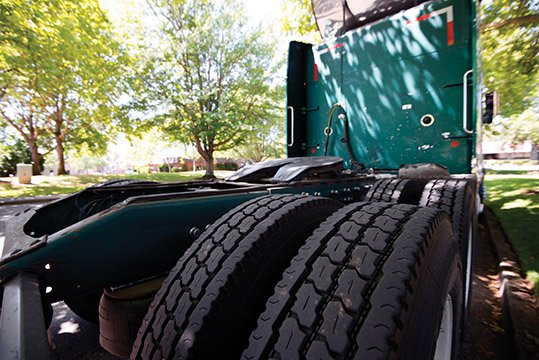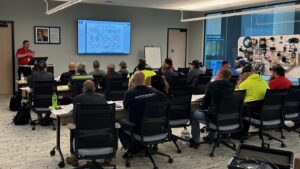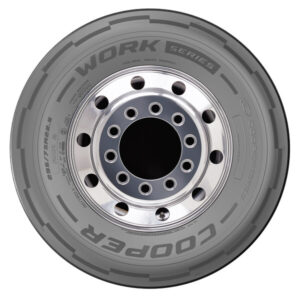Read the advertisements for commercial truck tires and you’ll see all sorts of claims about “new” technology in the design and materials that make the final product. New and improved tread designs, stronger belting materials, complex rubber compounds and innovative design features help bolster the claim that a particular tire is better than its competitors.
But when it comes to maximizing your return on your investment in tires, the same old rules still apply: Inspect your tires regularly and keep them properly inflated and aligned, and you’ll get the highest number of miles possible from each tire. The newest technology helps you do those things.
The costs of improper tire inflation can add up quickly. In addition to causing a decrease in fuel mileage, improperly inflated tires wear unevenly, wearing out sooner and possibly resulting in tire failure. Replacing tires before their expected lifespan is complete adds expense to your business — but it could get worse if tires are not replaced. A blowout can result in an expensive road-service call, including purchase of a replacement tire, usually at prices higher that can be negotiated at a dealer.
Then there’s the loss of time and the effect of a service call on scheduling. The next planned load can also be impacted if your current load can’t be delivered in time to pick up the next one. Even a great deal on a new tire can be swallowed by the loss in revenue while the replacement is made.
Overinflation can be worse than underinflation. Too much tire pressure can accelerate tread wear, cause damage to tread surfaces and increase the chance of punctures and shock damage. The ability of the tire’s tread to flex is lowered when the tire is overinflated.
Underinflation can occur when tires lose air for any reason. Over time, a small leak through a defective valve stem or poor bead seal can lower the pressure in the tire. A drop of just a few psi can cause heat to build in the tire, resulting in damage that might not be revealed until much later. In a tandem situation, the adjoining tire has to absorb more of the weight and will build up more heat, possibly damaging that tire as well.
Ambient temperature also has an impact on tire pressure. According to the Technology and Maintenance Council (TMC) of the American Trucking Associations (ATA), a 10-degree change in temperature can result in a two- to three-degree change in tire pressure. That’s why tires that are inflated to the correct pressure before hitting the road can become overinflated as they warm from road contact. It’s best to adjust pressure when tires are warm from use when possible.
Many drivers and carriers turn to tire-pressure monitoring systems (TPMS) and automatic tire-inflation systems (ATIS) for help in keeping tires properly inflated. With an ATIS, pressure is monitored and air is supplied as needed from the vehicle’s air-supply system. While the system can help keep tires at the correct level, it can also “hide” problems by keeping a leaking tire fully inflated so the driver doesn’t observe the problem. The key is regular inspection of both the tires and the inflation system.
TPMS are prevalent on most vehicles today. Many automobiles have a dashboard light that warns if one or more tires doesn’t have the correct pressure. For commercial vehicles, more sophisticated options are available that display the pressure in each tire and issue audible warnings if a problem is detected. A driver can identify which tire has a problem quickly and get help before roadside service is needed.
Wheel alignment is often overlooked by drivers and truck owners, but it can be critical to obtaining maximum wear from tires. Improper alignment can cause irregular wear to tires and other suspension parts. A wheel that’s out of line can even cause damage to another wheel; for example, misaligned drive axles can result in irregular wear to steer tires. The TMC recommends that tire alignment be checked at 15,000 to 30,000 miles and every 80,000 to 100,000 miles thereafter. Some owners
follow the practice of having drive tire alignment checked whenever steer tires are replaced.
Another common tire problem results from nonconcentric tire mounting. This can occur when rim damage or rust and debris prevent a tire from seating properly on the rim. This keeps the exact center of the tire from aligning with the center of the rim, an “out of round” condition that can cause vibration that can sometimes be felt in the driver’s seat.
When purchasing new tires, make sure each rim is properly inspected and cleaned before the new tires are mounted. Some shops will do this routinely, but not all are as diligent.
Some tire brands have a ring molded into the tire near the bead that should be the same distance from the rim all the way around the tire. If it isn’t, the tire may not be properly mounted.
Finally, no automated warning system replaces regular inspection. Every pre-trip inspection should include a thorough look at each tire, including the tread and both sidewalls. A small sidewall cut or bubble can result in tire failure just a few miles down the road. If discovered in time, foreign objects, such as nails in the tread, can be removed before they penetrate the tire’s air chamber. Missing chunks of tread or other damage may indicate an upcoming failure.
While new technology can be helpful, savvy drivers understand that regular inspection, along with proper inflation and alignment, are critical to getting the most from every tire.
Cliff Abbott is an experienced commercial vehicle driver and owner-operator who still holds a CDL in his home state of Alabama. In nearly 40 years in trucking, he’s been an instructor and trainer and has managed safety and recruiting operations for several carriers. Having never lost his love of the road, Cliff has written a book and hundreds of songs and has been writing for The Trucker for more than a decade.








